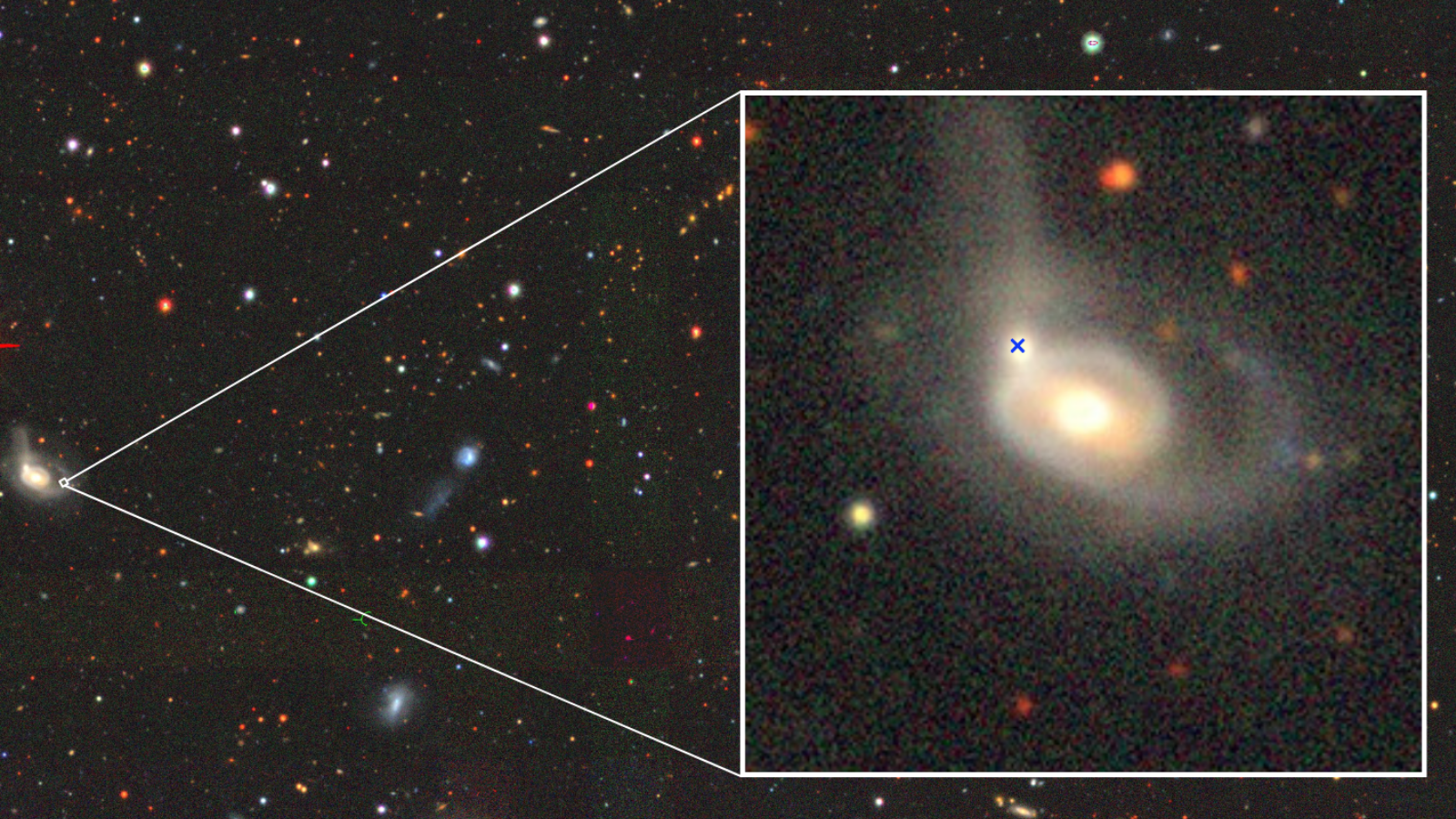Image of the Day 2024 Archive
Explore our Image of the Day 2024 Archives!
Galactic masquerade glares its eyes on Halloween
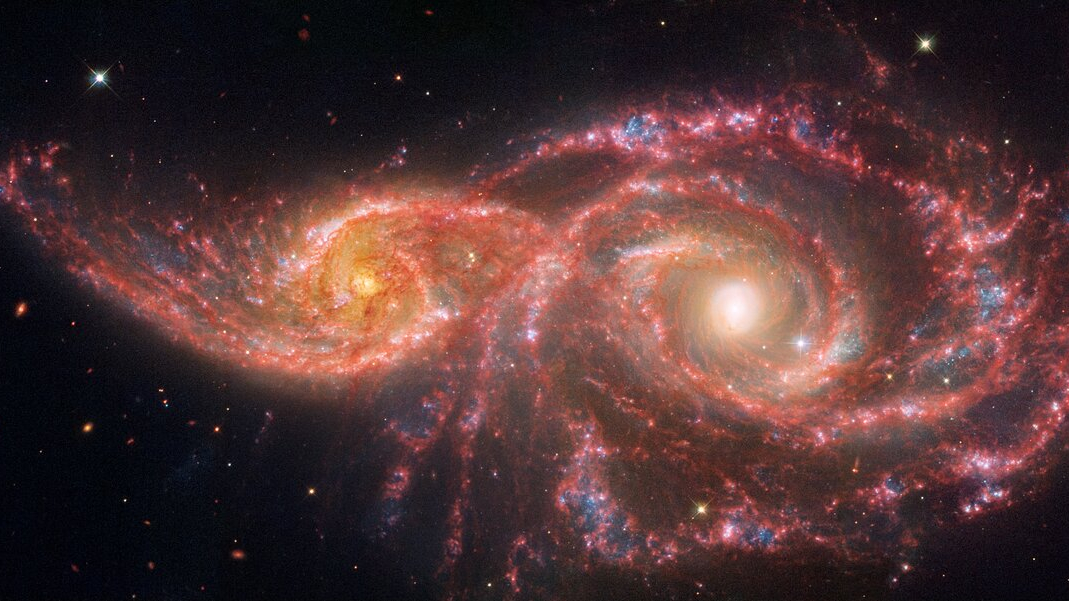
Thursday, October 31, 2024: Like a mask covering two cosmic eyes staring unblinking into the abyss, these two spiral galaxies grazed one another several million years ago. This image's fiery glare, eyes swirled in their galactic arms, is a combination of mixed-spectrum captures using the James Webb Space Telescope for mid-infrared light, and the Hubble Space Telescope for visible and ultraviolet light. On the left, IC 2163, passes just behind NGC 2207, on the right.
The ATLAS anti-tail
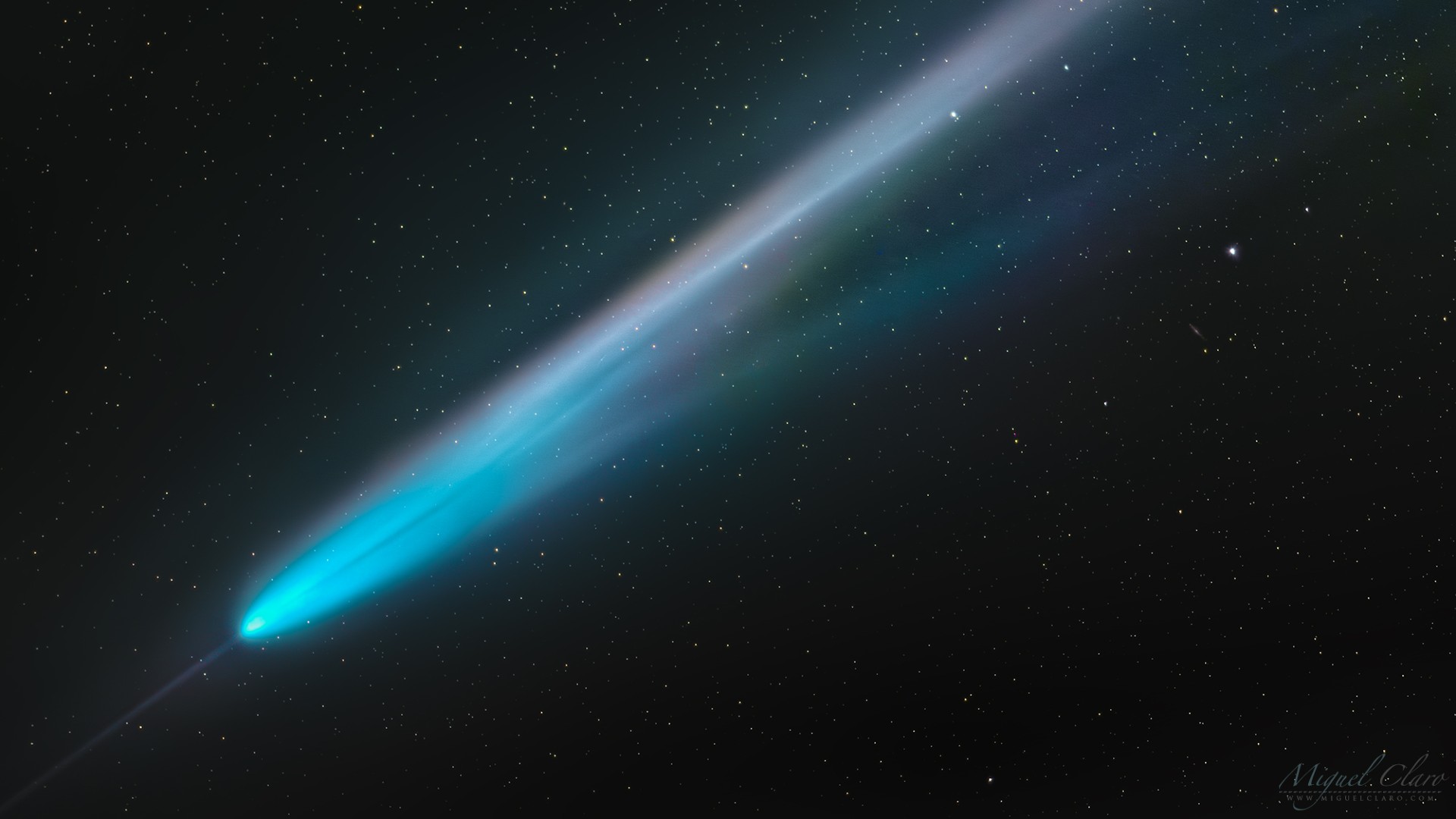
Wednesday, October 30, 2024: This close-up image of comet C/2023 A3 (Tsuchinshan-ATLAS) was taken from the Dark Sky Alqueva reserve in Portugal on Oct. 13, 2024 when the comet was displaying an impressive level of brightness and details, as well as a cool 'anti-tail.'
In this photo, it also seems that the comet's ion tail is also visible alongside its prominent dust tail. In addition to trailing long tails of dust and gases behind them, some comets develop an ion tail, a second tail made up of charged particles pushed away from comets by solar radiation and solar wind. — Miguel Claro
Read more: Astrophotographer captures comet Tsuchinshan-ATLAS growing an anti-tail (photos)
Like a cosmic bat in the dark of night
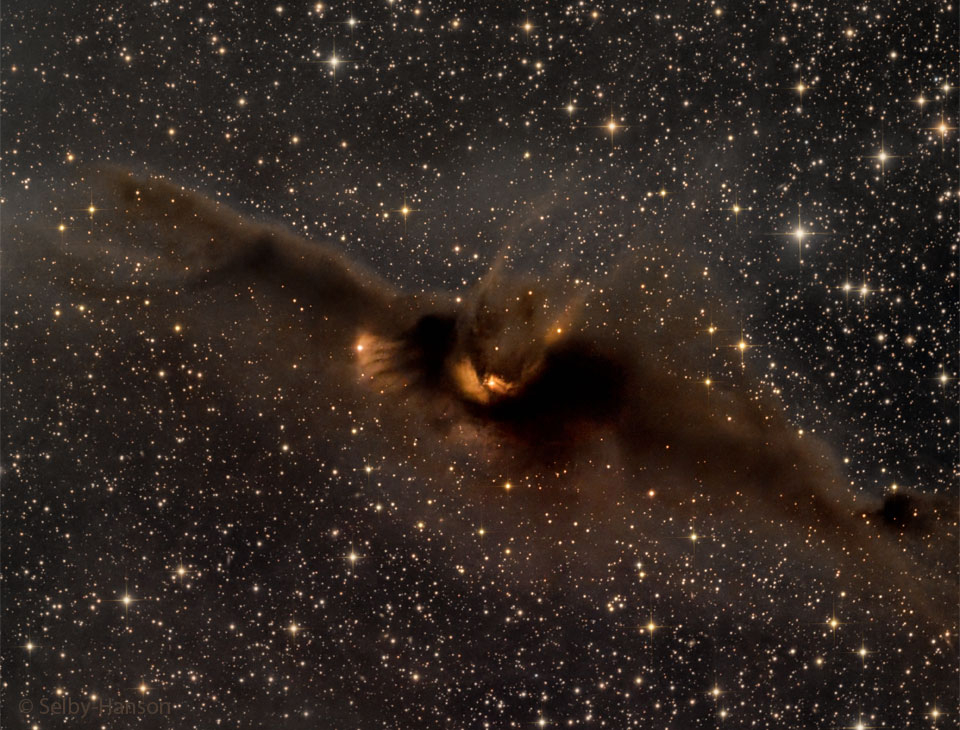
Tuesday, October 29, 2024: Resembling something like Man Bat, from Warner Bro's "Batman: The Animated Series," this nebula stretches its metaphorical wings across a massive 12 light-years of space. Designated LDN 43, the Cosmic Bat Nebula is located in the night sky nearly 1,400 light-years away within the constellation Ophiuchus, this stellar nursery's thick density of gaseous clouds blocks out the light of the stars and galaxies from shining through. Only another, nearby nebula, LBN 7, is bright enough for its light to break through in sections near the visual center of LDN 43.
Astronaut spots aurora over Lake Michigan
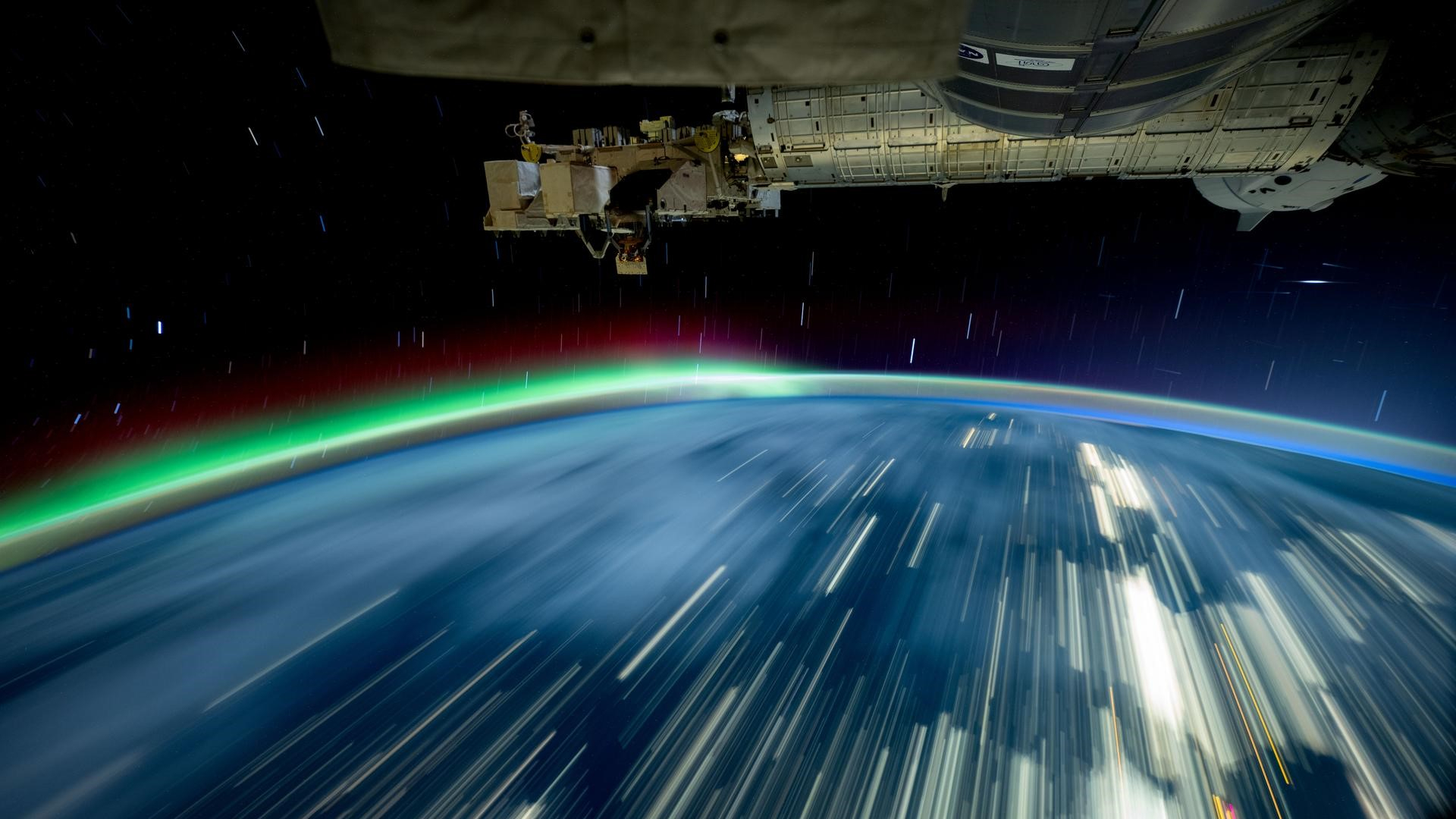
Monday, October 28, 2024: NASA astronaut Don Pettit has given us another beautiful view from just above our home planet of Earth. With the space station hanging overhead, this image captured from the International Space Station shows a long exposure photograph taken over Lake Michigan, with the aurora borealis hovering in the sky.
Recent solar activity has created a spike in auroras in lower latitudes than they are typically visible. As the sun continues through solar maximum, emitting stronger coronal mass ejections into space, aurora are likely to continue.
Get the Space.com Newsletter
Breaking space news, the latest updates on rocket launches, skywatching events and more!
Read more: Aurora season is here: What to expect from the northern lights in 2024/25
Super tall Super Heavy rolls out to the pad

Thursday, October 24, 2024: Super Heavy stands tall! The monstrous rocket booster for SpaceX's sixth Starship launch was rolled to the pad at the company's Starbase facility in Texas, Tuesday, ahead of the vehicles next integrated test flight (IFT-6). The booster for Starship's fifth flight (IFT-5) was launched Oct. 13, with a successful retrieval of the rocket stage using the launch tower's "chopstick" arms.
The towering booster measures 233 feet (71 meters) in height, and spans a gaping 30 feet (9 meters) in diameter. SpaceX posted this photo on X, stating, "flight 6 Super Heavy booster moved to the Starbase pad for testing. The move comes just one week after returning the first booster caught following launch."
Read more: SpaceX rolls out Super Heavy rocket for Starship Flight 6 test launch (photos)
A mesmerizing new launch perspective
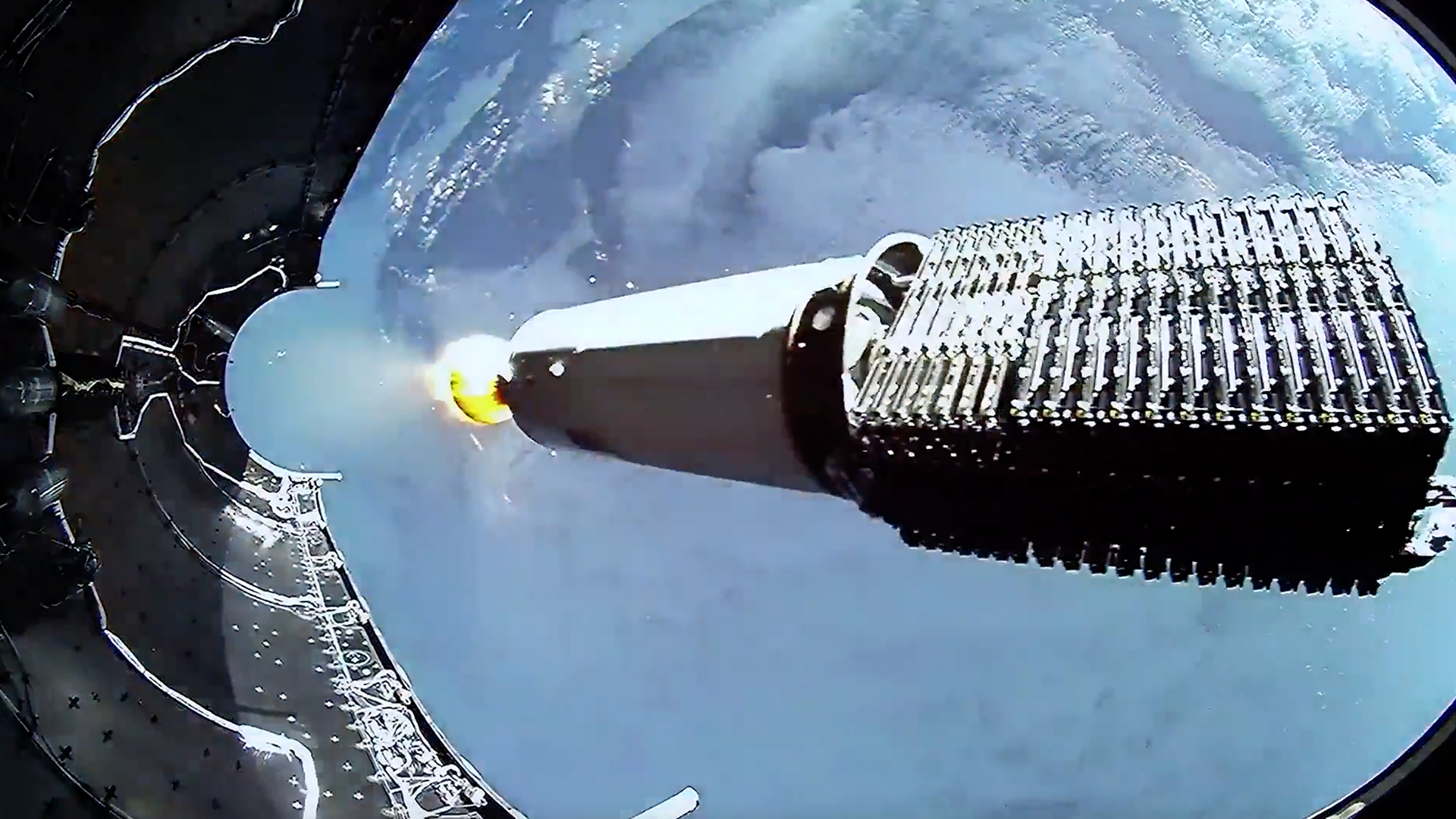
Wednesday, October 23, 2024: A spectacular new video shows a set of SpaceX satellites ready to deploy into space.
SpaceX's in-space video shows a stacked group of Starlink satellites being revealed after two pieces of protective hardware, known as payload fairings, fall away from the Falcon 9 rocket that launched the group.
"View from the active and passive halves of a payload fairing during a recent Falcon 9 launch of @Starlink," SpaceX officials wrote on X, formerly Twitter on Monday (Oct. 21). The company did not say which launch the footage was from. — Elizabeth Howell
Tsuchinshan-ATLAS fading fast!
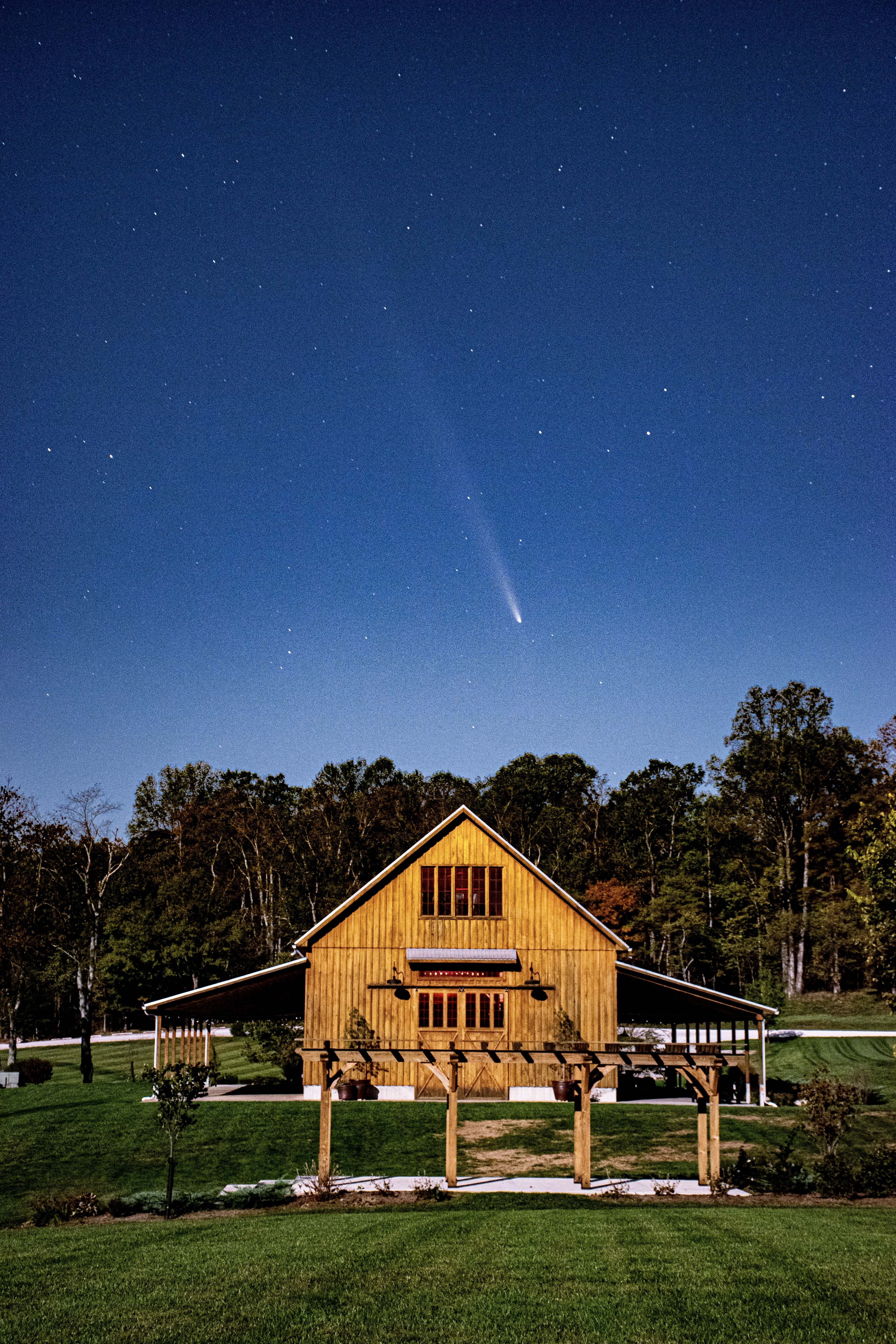
Tuesday, October 22, 2024: It's fading fast! Comet Tsuchinshan-Atlas (C/2023 A3) has graced our October skies the past couple weeks, but as the space rock gets farther from Earth, its brilliance has begun to fade. Last week, the comet was measured at magnitude +0.5, well within the grasp of the human eye. As the days continue, it will likely be visible only in binoculars into early November. After which you will need a telescope to spot it.
This image was shot by Josh Dinner, in Bloomington, Indiana, at a farm called Whippoorwill Hill. The comet emerged about a half hour after sunset, and set behind the barn pictured here, shortly after. Go see the comet while you still can!
Related: Comet Tsuchinshan-ATLAS is still visible in the night sky, but not for long
Roman Space Telescope going for a spin
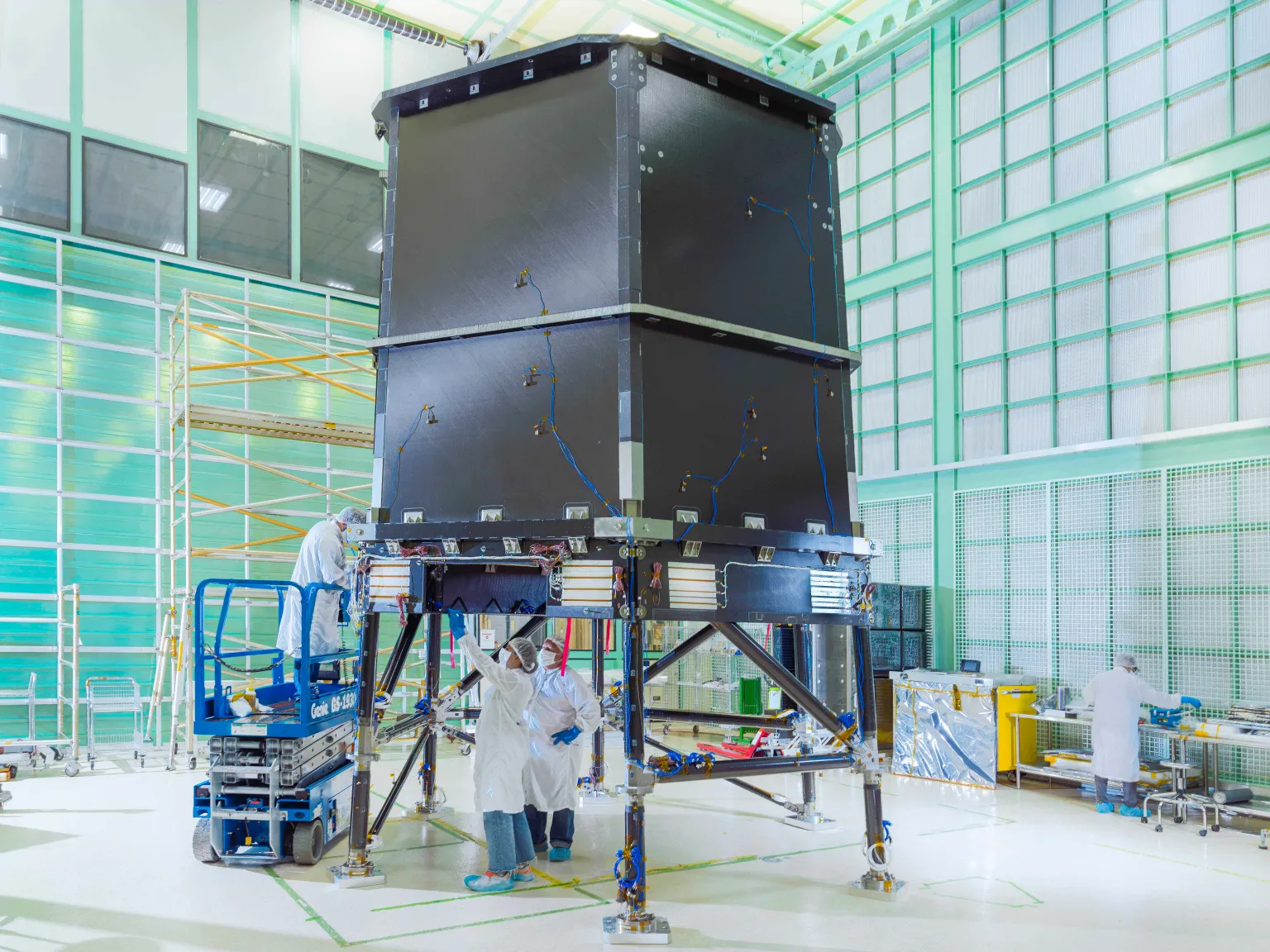
Monday, October 21, 2024: NASA recently put a crucial part of the Roman Space Telescope — the Outer Barrel Assembly — through a rigorous "spin test" designed to evaluate its resilience against the intense gravitational forces it will encounter during launch. This test, a standard procedure in aerospace engineering, typically takes place inside a massive centrifuge that mimics the elevated gravity conditions of a space mission. In this image, engineers can be seen securing the probe's Outer Barrel Assembly ahead of testing, which will protect the telescope from stray light that could interfere with its observations. — Victoria Corless
Related: NASA's next-generation Nancy Roman Space Telescope aces crucial 'spin test'
Hunter's supermoon kick starts spooky season in style

Friday, October 18, 2024: If you aren't in the mood for Halloween yet, today's image of the day might just get you in the spirit.
Taken in Shigatse, Xizang Autonomous Region of China yesterday (Oct. 17), the image shows the Hunter's super full moon rising over Jiangzi Zongshan Castle. Like a scene from a classic horror movie, the castle is eerily lit by the seemingly too-large full moon. Peer at it too long, and your imagination may run away with you, leading to you speculating about what manner of ghouls could lurk in the castle's walls or roam its grounds.
Of course, there is nothing supernatural about the supermoon. It isn't witchcraft that makes the moon appear larger, but the fact that its orbit around Earth is a flattened circle. That means there are times when the moon is closer to Earth, and when these times occur around a full moon, that's a supermoon.
Wait... can you hear that howling?
Euclid observes interacting galaxies
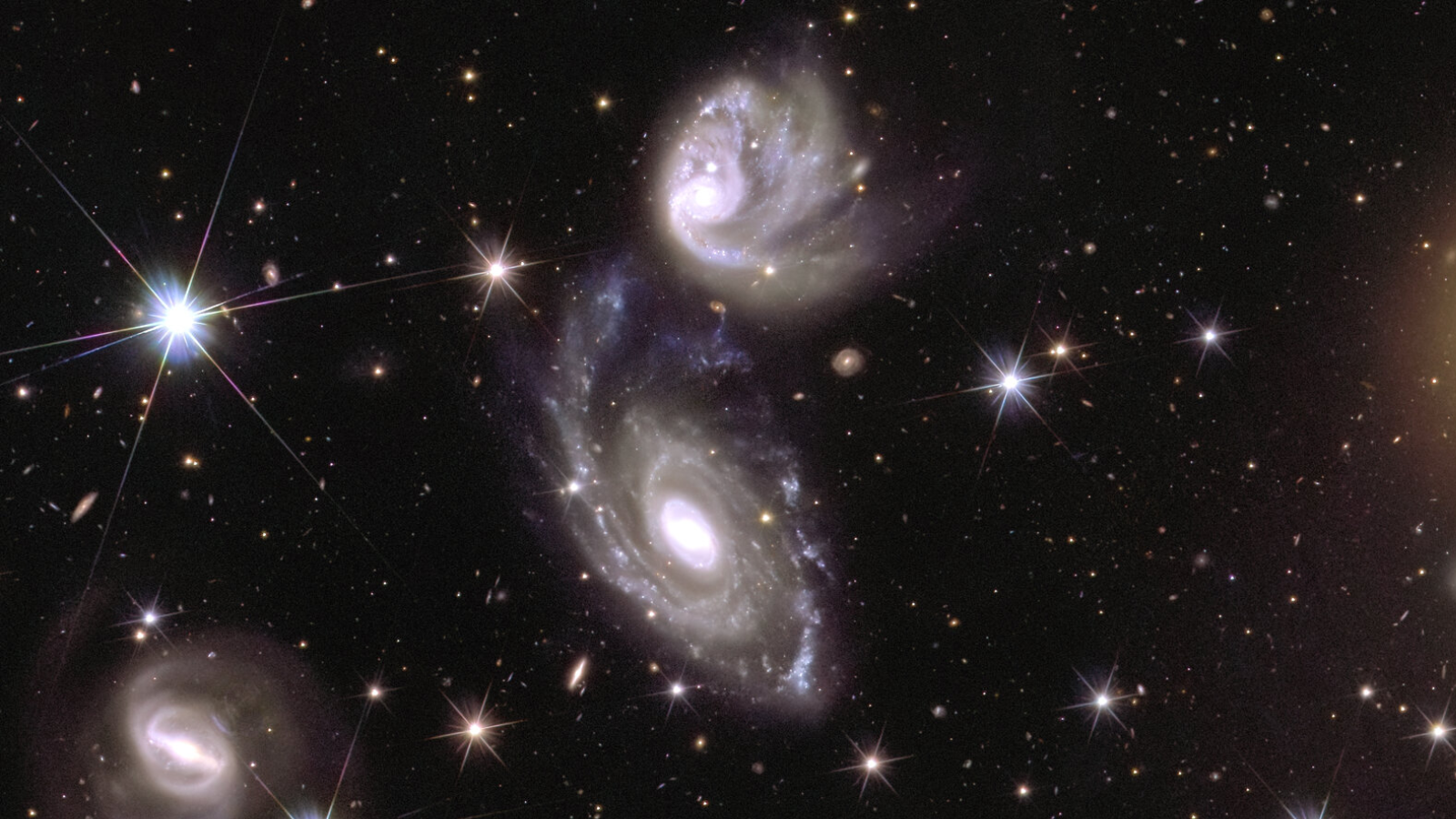
Thursday, October 17, 2024: The European Space Agency (ESA) space telescope Euclid has release the "first page" of the cosmic atlas that it is creating. Amongst the gems contained within the 208 gigapixels of data consisting of 260 observations is this stunning image of the interacting galaxies ESO 364-G035 and G036.
Located around 420 light-years from Earth the galaxies are seen at 150 times in comparison to the larger Euclid mosiac released on Tuesday (Oct. 15). The images show the future promise of Euclid. The main aim of the space telescope's six-year mission is the investigation of dark matter and dark energy, the two most dominant and mysterious elements of the universe.
Read More: Euclid 'dark universe' telescope reveals 1st breathtaking images from massive 'cosmic atlas' map
Super Heavy tower catch

Tuesday, October 15, 2024: SpaceX launched its 400-foot-tall (122 meters) Starship vehicle for the fifth time ever over the weekend, sending the giant rocket aloft from its Starbase site in South Texas. In a world's first, SpaceX's Super Heavy executed what appeared to be a bull's-eye landing, hovering near the Mechazilla launch tower as the tower captured it with its metal "chopstick" arms. Pictured here, a sequence composite shows Super Heavy as it approached and was grabbed by the tower.
NASA's Europa Clipper readies for launch!
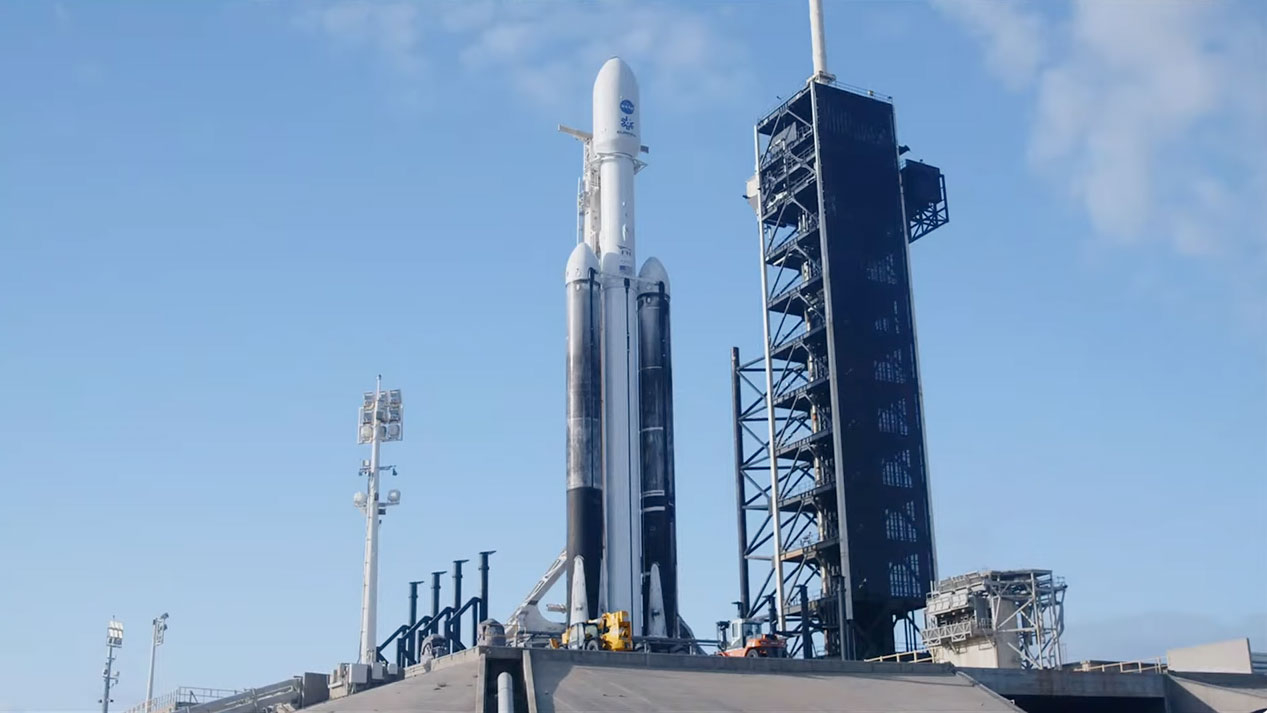
Monday, October 14, 2024: NASA's historic Europa Clipper mission is set for launch. Today's image captures the spacecraft sitting atop the SpaceX Falcon Heavy rocket that will haul it into space. At the time of writing, the launch from NASA's Kennedy Space Center in Florida was set for 12:06 p.m. EDT (1606 GMT). This follows several days of delays prompted by Hurricane Milton and the closure of the Space Center.
If the launch does go ahead today, it will be the first small step on the Europa Clipper's long journey to the Jupiter system. Once it arrives in April 2030, the spacecraft will investigate the ocean moon of Europa. The salty ocean that lurks under the icy shell of this moon is believed to be one of the most probable places in the solar system to discover simple alien life.
Go Europa Clipper!
Northern Lights illuminate the skies over the U.S.
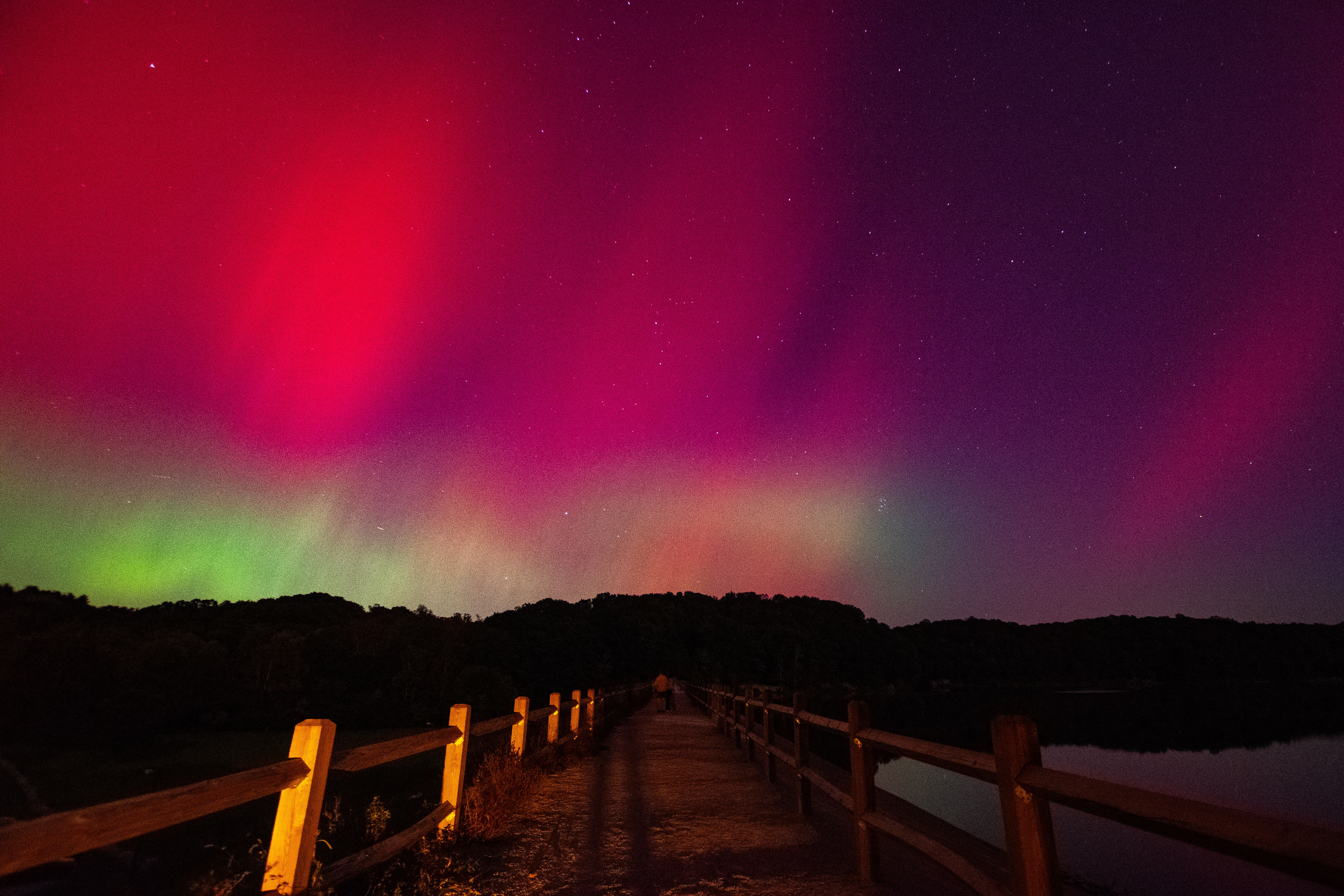
Friday, October 11, 2024: A powerful eruption of plasma erupted from the sun on Tuesday (Oct. 8), lashing Earth's protective magnetic field on Thursday (Oct. 10). This generated powerful geomagnetic storms reaching the extreme G5 scale. These storms can cause disruption to power and communications infrastructure, but they also bring with them the opportunity to see the Aurora Borealis or "Northern Lights" at much lower latitudes than usual. Today's image comes courtesy of Space.com's own Josh Diner, who was able to capture the Northern Lights over Griffey Lake, in Bloomington, Indiana, Thursday night at 10:10 pm EDT.
Hurricane Milton looms over the VAB
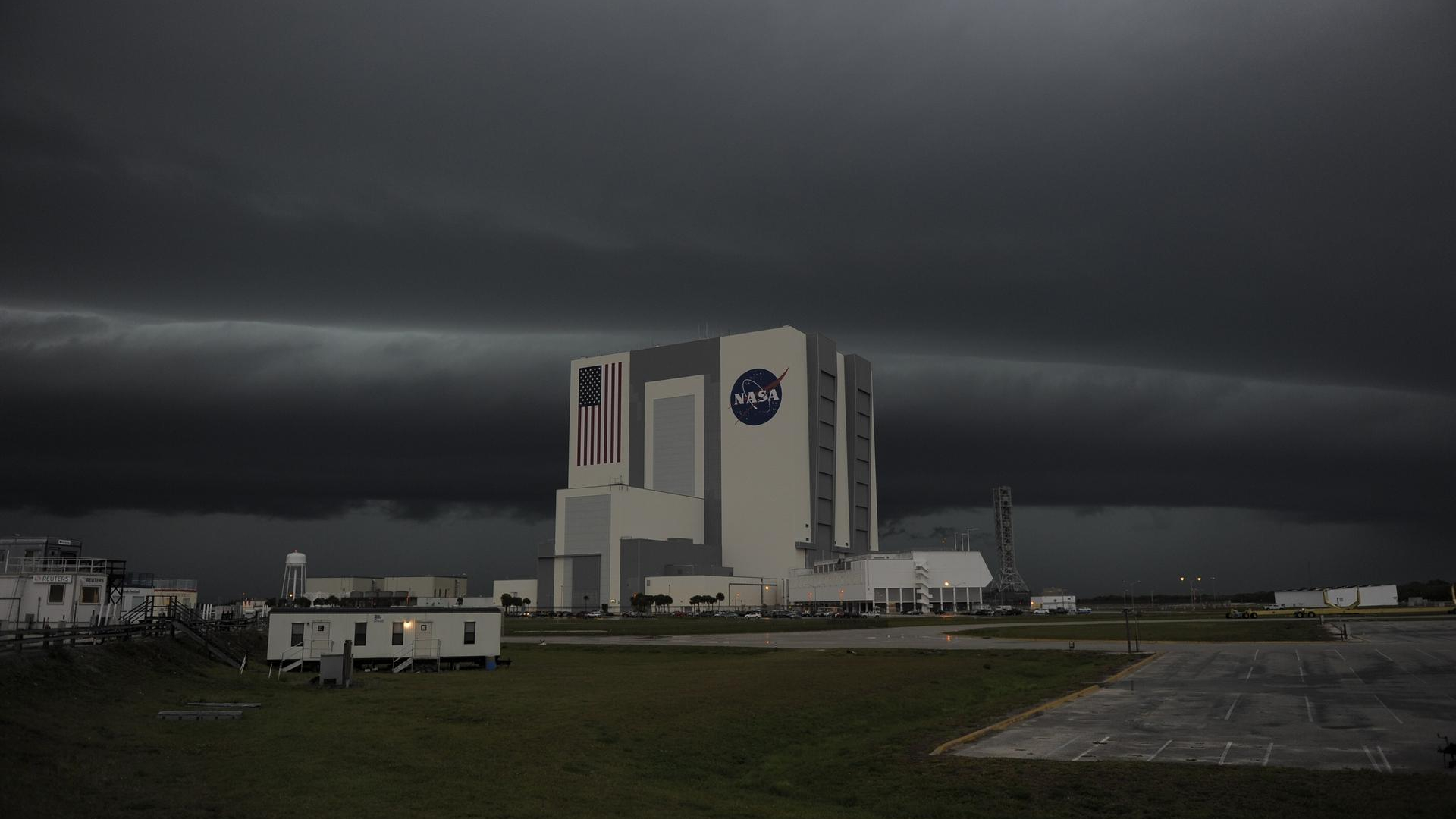
Thursday, October 10, 2024: Hurricane Milton made landfall yesterday on Florida's west coast and made its way across the state to NASA's Kennedy Space Center (KSC). Though the Space Coast didn't experience as severe storm surges and wind speeds as cities like Tampa or Sarasota, KSC was on high alert, raising its base status to HURCON 1 — closing the center to all but essential personnel. In a post on X, accompanied by this photo, KSC said, "The center is now closed, with the exception of essential emergency response personnel and Ride Out Team members."
A rising comet comes to the Northern Hemisphere
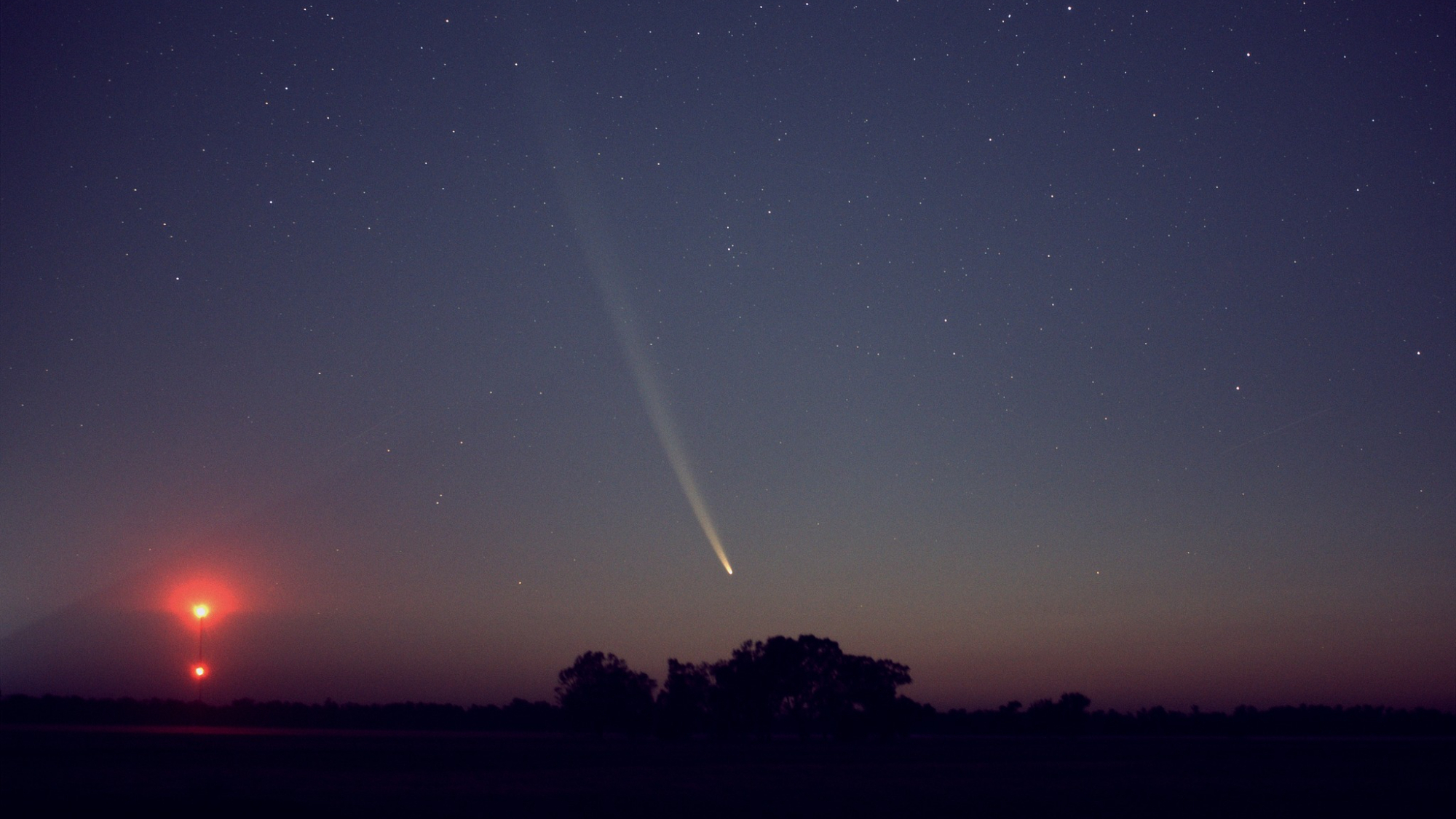
Wednesday, October 9, 2024: Comet Tsuchinshan-ATLAS is arriving at its projected pinnacle of brightness, followed by a transition into the evening sky. Until now, the comet has been visible primarily for those living in the Tropics and the Southern Hemisphere, though in recent days, the comet has made itself evident to those across parts of the United States, albeit deep in the dawn twilight, hovering low above the east-southeast horizon. Soon, however, observers across the Northern Hemisphere will get their first really good look at this newest visitor to the sun.
This stunning image of Comet Tsuchinshan-ATLAS was captured by Michael Mattiazzo during dawn twilight on October 1st from Swan Hill, Victoria, Australia. He used a a Canon 6D + Sigma lens at 50mm f/2.8. iso1600. 15 sec. — Joe Rao
Read more: The dazzling Comet Tsuchinshan-ATLAS is emerging in the night sky: How to see it
Milton from the space station

Tuesday, October 8, 2024: NASA astronaut Matthew Dominick has given us dramatic, Dragon's-eye views of Hurricane Milton churning its way toward landfall. Dominick posted a timelapse video on X (formerly Twitter) today, showing Hurricane Milton through the window of the SpaceX Crew Dragon capsule Endeavour, which is docked to the International Space Station (ISS).
Endeavour is flying SpaceX's Crew-8 mission for NASA; in early March, the capsule carried Dominick to the orbiting lab along with fellow NASA astronauts Michael Barratt and Jeanette Epps, as well as Alexander Grebenkin of Russia's space agency Roscosmos. — Mike Wall
Read more: Dragon's-eye view: Astronaut captures amazing shots of Hurricane Milton from space
Space Clipper meets rocket ride
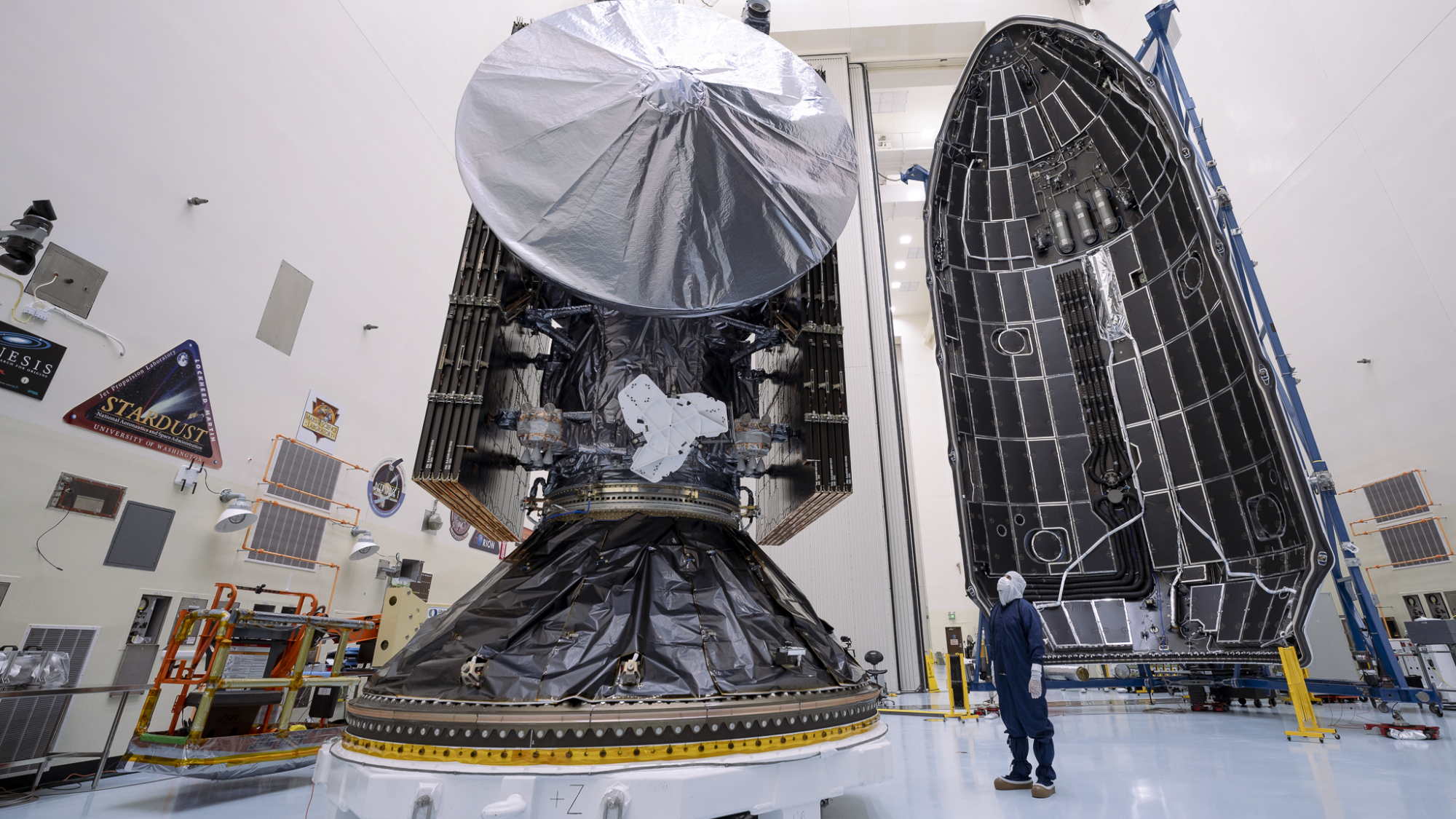
Monday, October 7, 2024: NASA's next flagship spacecraft, the Europa Clipper, meets its massive SpaceX Falcon Heavy rocket nose cone in this photo taken during encapsulation for launch. Europa Clipper is scheduled to launch this month on a mission to explore Europa, an icy moon of Jupiter that scientists have long-suspected may harbor a subsurface ocean with more water than exists on Earth, a potential bastion of alien life.
NASA and SpaceX initially hoped to launch Europa Clipper on Oct. 10, but the mission has been delayed by Hurricane Milton, which is expected to pass over the spaceport ahead of that launch date. A new launch date has not been set.
A ring of fire over Earth
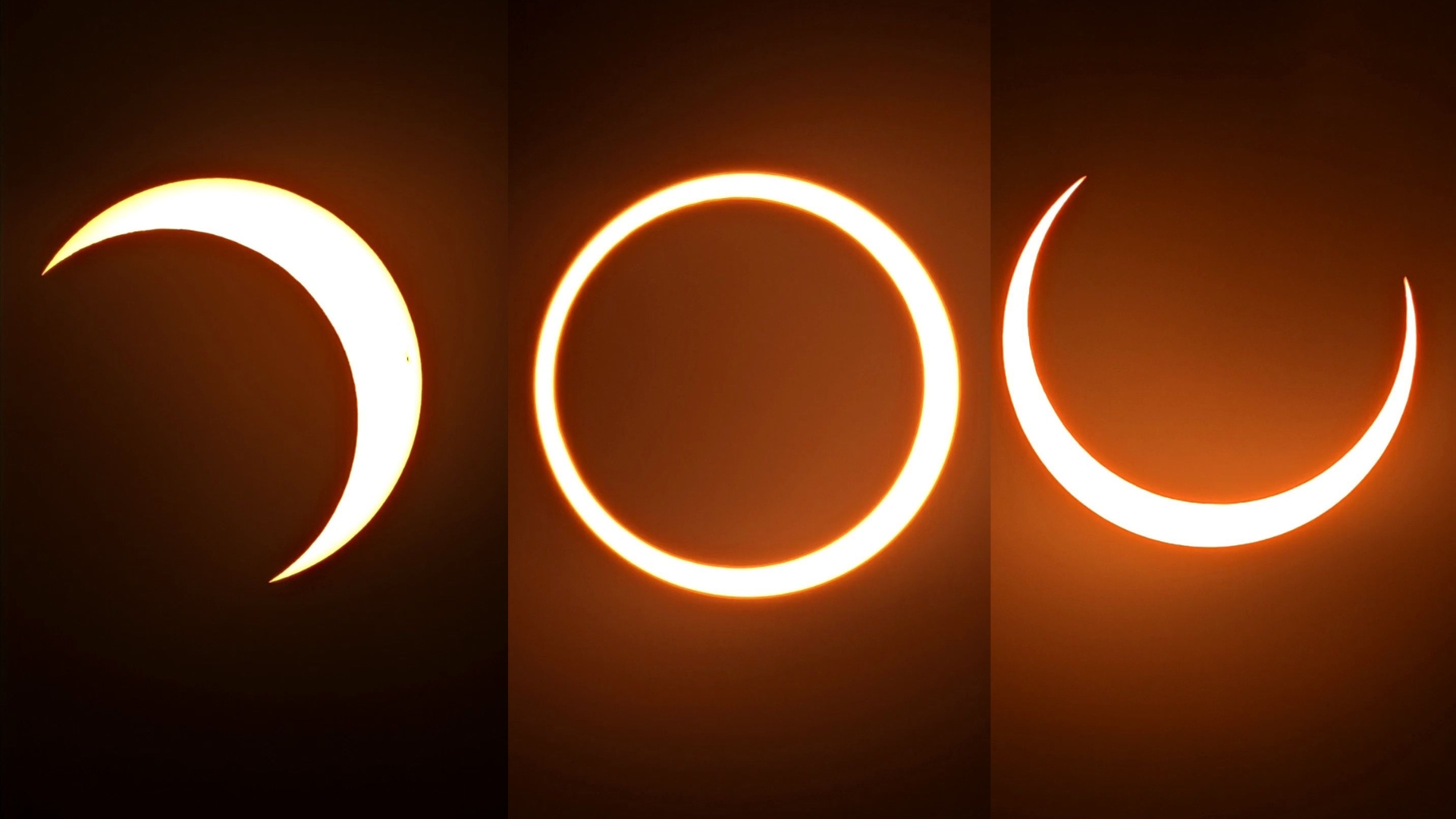
Thursday, October 3, 2024: The sun and moon align in the sky over Easter Island, or Rapa Nui, in this stunning collage of annular solar eclipse of Oct. 2, 2024 as photographed by eclipse chaser Jamie Carter.
"Well, that was incredible. The tension! A cloud left the sun just 10 seconds before the Baily's beads appeared, and another appeared a minute after the ring ended. We were so lucky," Carter told Space.com.
"It felt incredible to actually see the ring, knowing I had no more than a 50-50 chance. It was so cold in the minutes before annularity," Carter added.
These images show the initial partial phase, "ring of fire" peak and exit partiality during the hours long eclipse from Carter's position on Easter Island in the remote Pacific Ocean. Check out more amazing eclipse photos!
A comet to behold
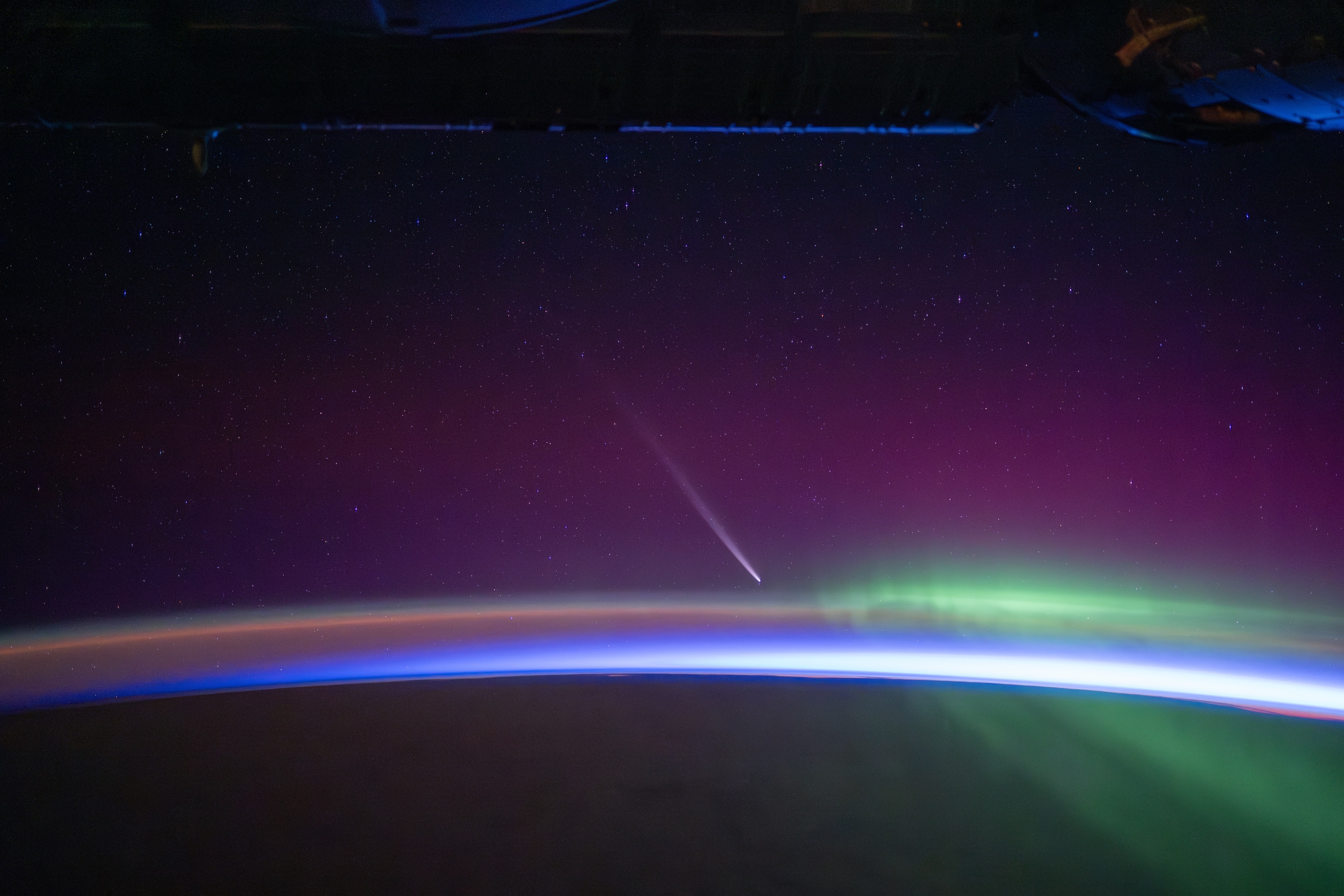
Wednesday, October 2, 2024: The amazing views from space keep coming. This image, taken by NASA astronaut Matthew Dominick, shows the stunning Comet Tsuchinshan-ATLAS as it shined over a nighttime Earth with green auroras below on Sept. 29. "Comet rises up over the horizon just before orbital sunrise with aurora streaking by," Dominick wrote on X (formerly Twitter) while sharing the image.
Comet Tsuchinshan-ATLAS is currently visible in the early morning sky and was visible to the unaided eye until the predawn of Oct. 2. It will return to the early morning sky between Oct. 12 and Oct. 30, making its closest approach to Earth on Oct. 13.
Fire-breathing space Dragon
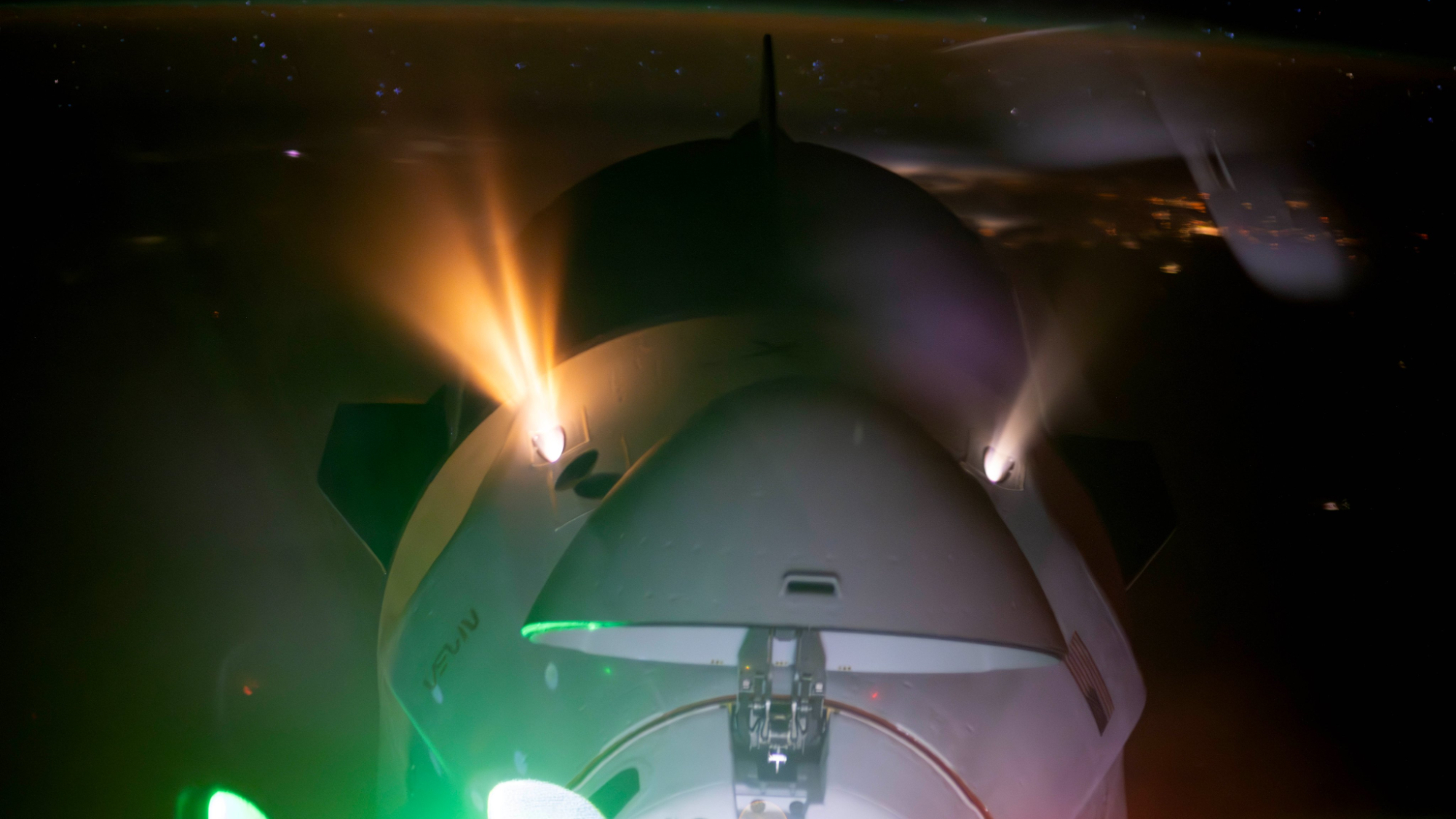
Tuesday, October 1, 2024: SpaceX's Crew-9 Dragon spacecraft, called Freedom, fires its Draco thrusters like some kind of space leviathan in this stunning photo taken from the International Space Station on Sunday, Sept. 29. This photo, which was captured by NASA astronaut Don Pettit on the station, the Dragon is captured as it docked at the ISS to deliver two new crewmembers to the orbiting lab.
"Here Be Dragons!," Pettit wrote on X while sharing the photo. "Crew-9 Dragon spaceship “Freedom” arrived to @Space_Station last night."
"The approach and docking sequence naturally draws our crew to a window; in this case, about five of us were crowded in Dragon Crew-8 to watch Dragon Crew-9 dock," Pettit added. "With everyone bouncing around for a peek out the window, this photo was a quick handheld snap, complete with window reflections and streaky stars. This Dragon snorts fire! Welcome aboard Crew-9."
Archives
Check out our Image of the Day Archives for more awesome photos.
Image of the Day 2020 Archive
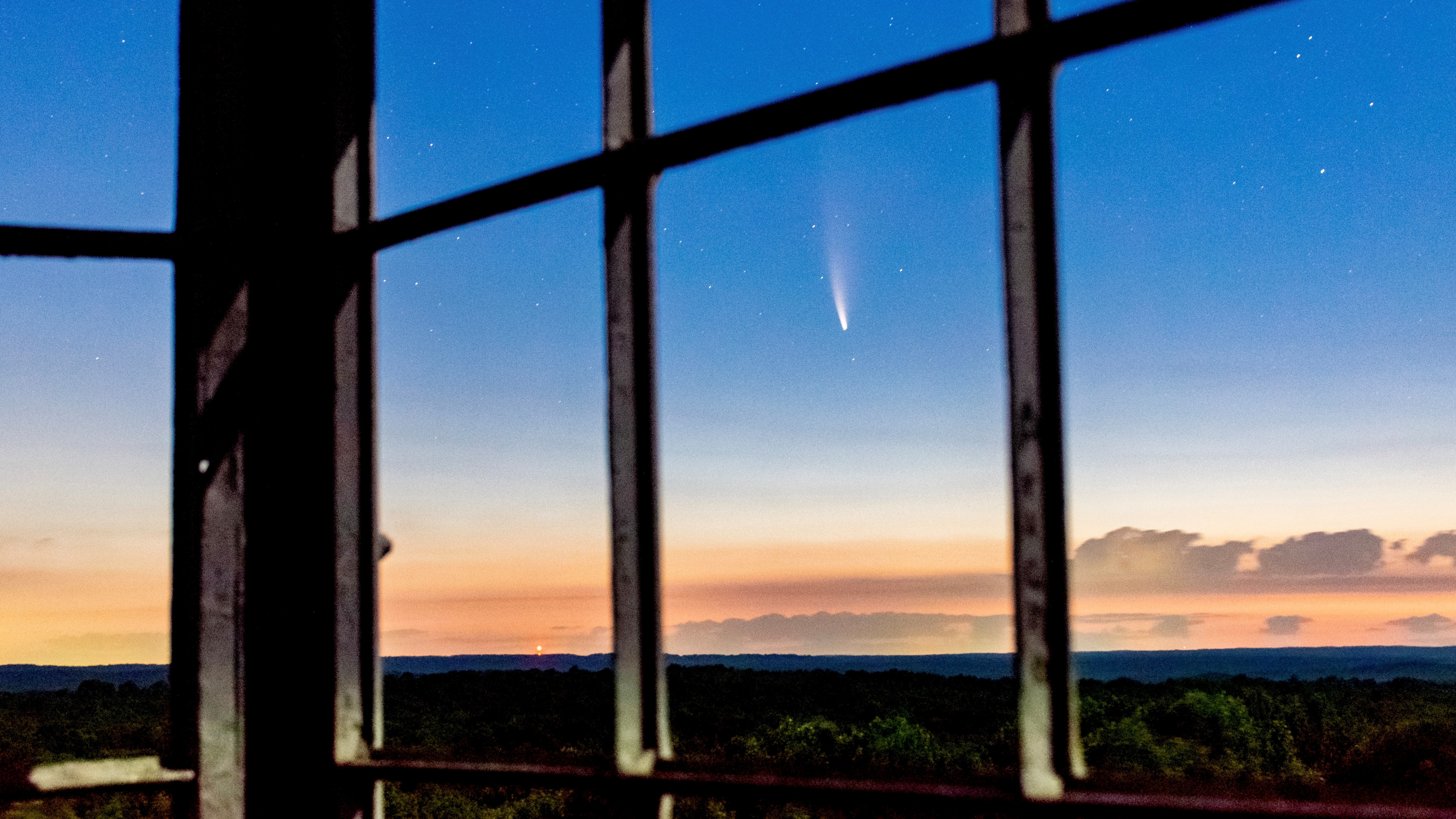
Image of the Day 2019 Archive
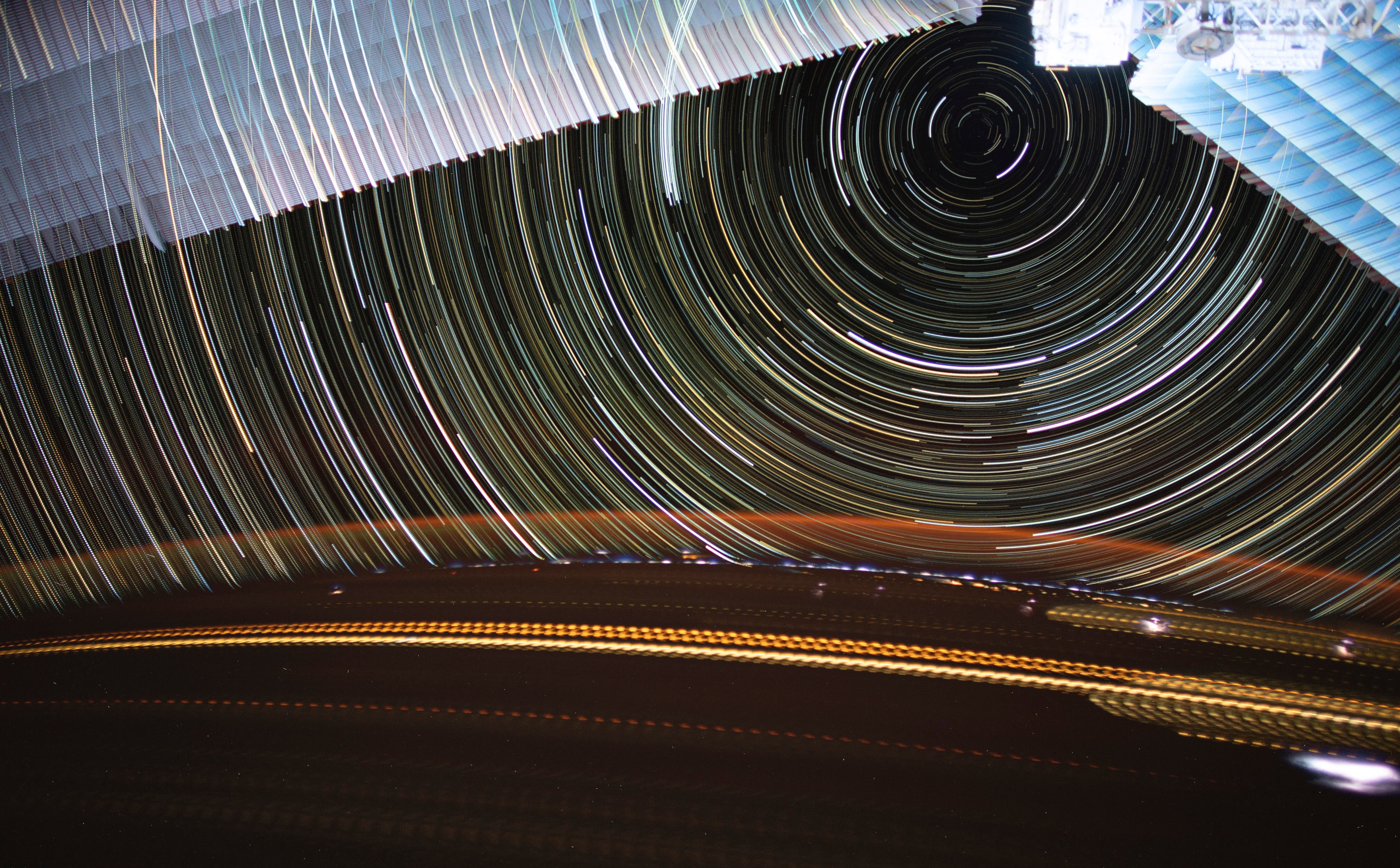
September >
Can't find the date you're looking for? It may have been a weekend or holiday, when we don't normally update our Image of the Day.
Click 'NEXT PAGE' below for September >
Join our Space Forums to keep talking space on the latest missions, night sky and more! And if you have a news tip, correction or comment, let us know at: community@space.com.

Space.com is the premier source of space exploration, innovation and astronomy news, chronicling (and celebrating) humanity's ongoing expansion across the final frontier. Originally founded in 1999, Space.com is, and always has been, the passion of writers and editors who are space fans and also trained journalists. Our current news team consists of Editor-in-Chief Tariq Malik; Editor Hanneke Weitering, Senior Space Writer Mike Wall; Senior Writer Meghan Bartels; Senior Writer Chelsea Gohd, Senior Writer Tereza Pultarova and Staff Writer Alexander Cox, focusing on e-commerce. Senior Producer Steve Spaleta oversees our space videos, with Diana Whitcroft as our Social Media Editor.
